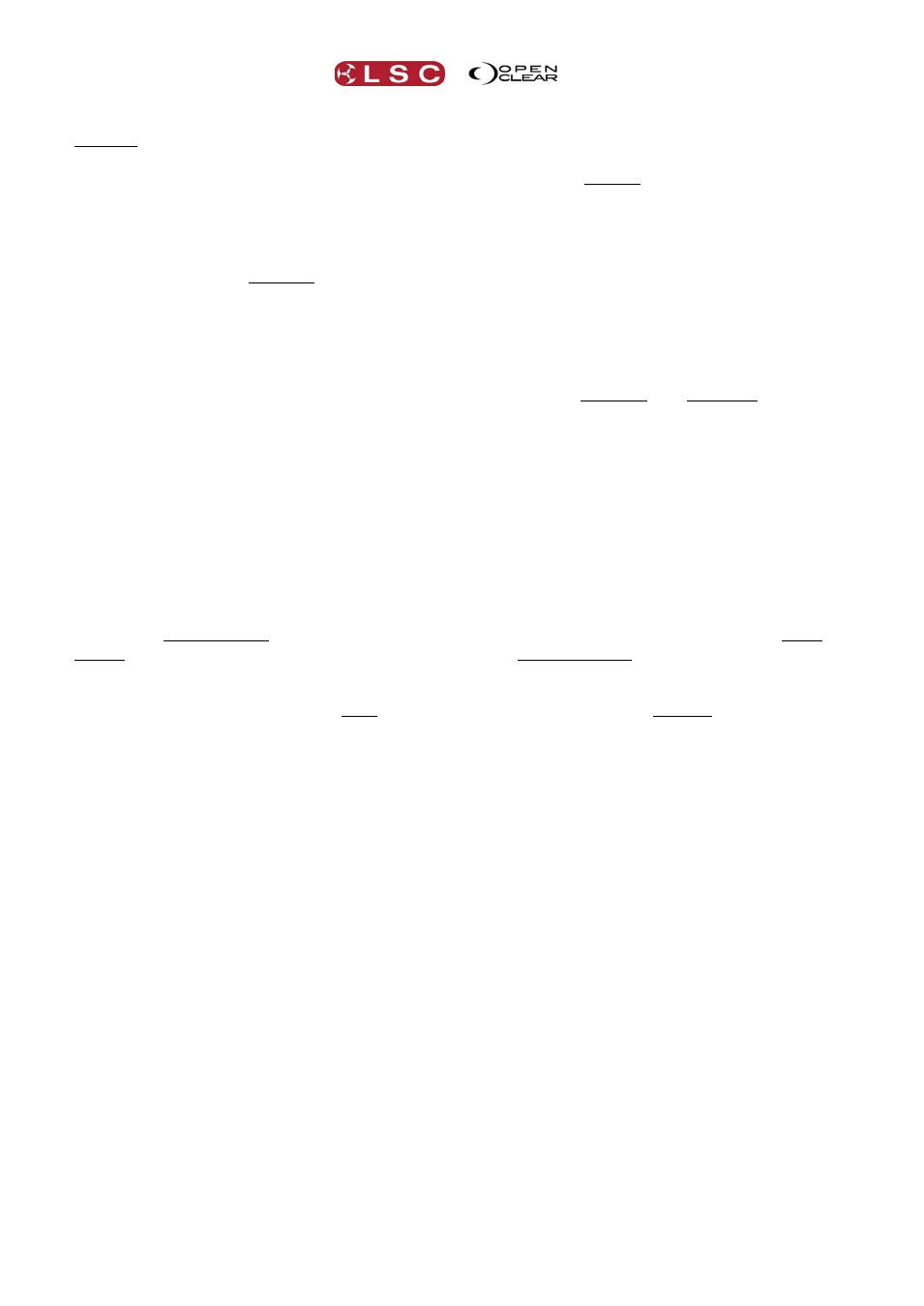6 playback control, 7 recording and playback concepts, 1 tracking playback – LSC Lighting CLARITY LX Series v.1 User Manual
Page 248: 2 typical tracking operations

Operating Concepts & Terminology
Clarity
Operator Manual
Page 238
programmer is used to vary the value of the attribute, the attribute is said to have been
touched by the programmer. If the touched value is recorded into a cue-list, then that the
attribute is no longer touched. If it is varied after being recorded it is again touched. When an
attribute is no longer controlled by a programmer it is said to be cleared from the programmer.
42.6 PLAYBACK CONTROL
When a cue is played back, any fixture attribute values in that cue appear on the output
(subject to priority rules above). When a playback no longer controls any attributes, the
playback is said to be released.
42.7 RECORDING AND PLAYBACK CONCEPTS
When you record a cue, there are several options that control exactly which attribute values
will be recorded. The options that you choose determine the suitability of the cue for the style
of playback that you choose to use. Each cue-list can be individually set for its own mode of
playback. In its simplest form there are two modes of playback, Tracking and Cue Only. These
playback modes determine how the output of a playback will change when a cue is played
back. The default settings in Clarity will record cues that are suitable for playback in tracking
mode and play them back in tracking mode.
Let’s firstly look at how the different modes of playback work and then see how to record cues
that are best suited to the selected playback mode.
42.7.1 Tracking Playback
When a cue-list is set to Tracking mode and the first cue is played back, the fixture attribute
values in the first cue appear on the output of the playback. When the next cue is played back,
its recorded values appear and any values from previous cues that were not changed by this
latest cue will remain on the output of the playback. The unchanged values from previous cues
are said to track through to the current state. The values in the current cue are known as hard
values and any values from previous cues are known as tracked values.
Therefore, in tracking mode, when a cue is played back, the current state on the output
of the playback will be the hard values in the current cue plus any tracked values from
previous cues.
For example:
Here are 3 cues played back in tracking mode. Cue 1 sets the look on stage and then cues 2
and 3 only contain hard values for the changes that need to occur on stage.
attribute 1 attribute 2 attribute 3
Cue 1
100
50
25
Output
100
50
25
Cue 2
80
Output
80
50
25
Cue 3
25
Output
80
25
25
Cue 1 contains hard values for attributes 1, 2 and 3 so when it is played back, the attributes go
to 100%, 50% and 25% respectively.
Cue 2 only contains a hard value for channel 1 so when it is played back attribute 1 changes to
80% and attributes 2 and 3 track through and remain at 50% and 25%.
Cue 3 only contains a hard value for attribute 2 so when it is played back attribute 2 changes
to 25% and attributes 1 and 3 track through and remain at 80% and 25%.
42.7.2 Typical Tracking Operations
Typical operations using the default record and playback settings (tracking) will be:
